
Nostalgia Tripping: Toronto's Chinatowns
The Greater Toronto Area has several Chinatowns. I think of the biggest one, centred around Spadina Avenue, as one of the liveliest neighbourhoods in the city. It seems always to be busy and loud, with a constant outpouring of customers from the restaurants, markets, and discount stores of all types that proliferate in the area. It is one of those places where you realize how multicultural the city really is at its core.
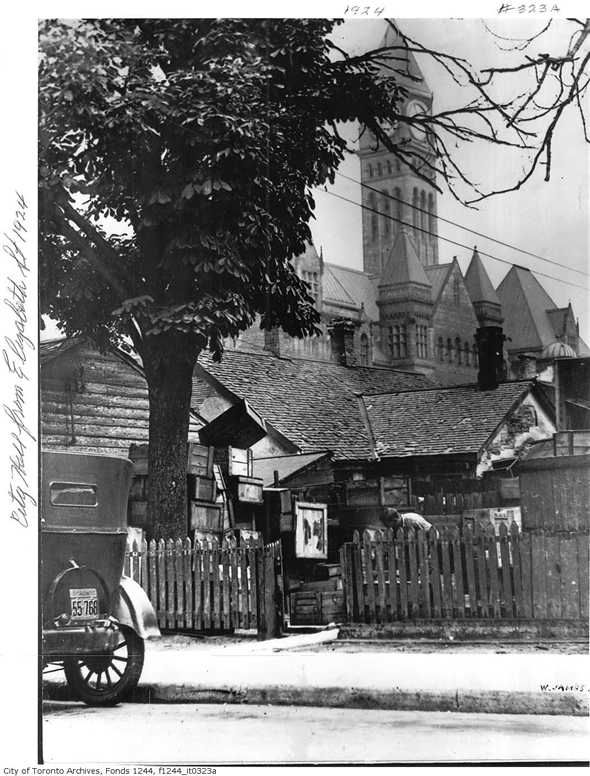
That particular Chinatown, however, is not the oldest Chinese neighbourhood in Toronto, though its size and architecture led me to believe so for a long time. Spadina Avenue used to be the centre of textile in the city, and the street is still lined with former warehouses and workshops. Many of them have been altered and repurposed over the years, and it's easy to miss their early twentieth-century faรงades covered up with multilingual signs and billboards.
According to Marjorie Harris's Toronto: The City of Neighbourhoods, the city's first Chinatown was located in the Ward, an impoverished, rundown district bounded by College Street, Yonge Street, University Avenue, and Queen Street. The first Chinese immigrant in Toronto was Sam Ching, who opened a laundry business at 9 Adelaide Street West in 1878.
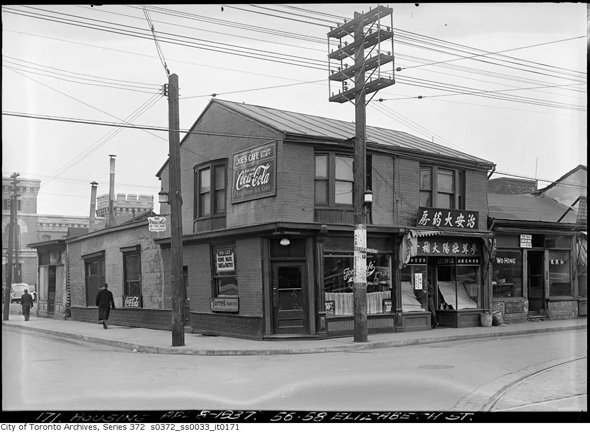
For many immigrants like Ching, the area was their first home in Canada. The centre of this Chinatown was the intersection of Dundas West and Elizabeth Streets, behind old City Hall. The settlers bought a number of properties in the area and opened stores, clubs, casinos, operas, and theatres, creating a "town within the city where it was possible to survive without ever to speak English." Most of this thriving neighbourhood was demolished when the city expropriated the land in order to build the new City Hall in the late 1950s.
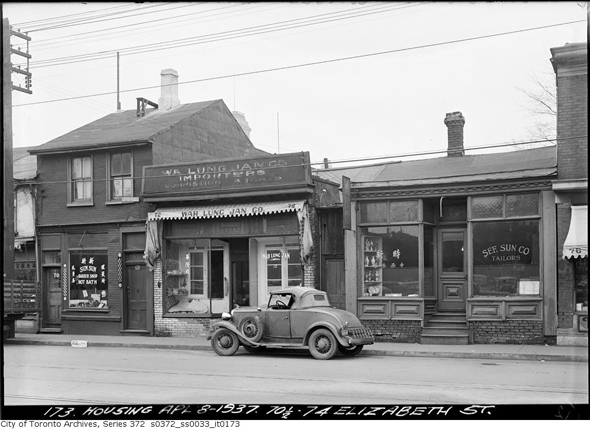
By 1921, the local Chinese population consisted of 2,100 and 115 women. This discrepancy has been blamed on the infamous "head tax," imposed on Chinese immigrants in the late nineteenth and early twentieth century. Although the construction of the Canadian Pacific Railway largely relied on the labour of hired immigrant workers, the Canadian government later attempted to discourage immigration from China in order to prevent the growth of immigrant communities.
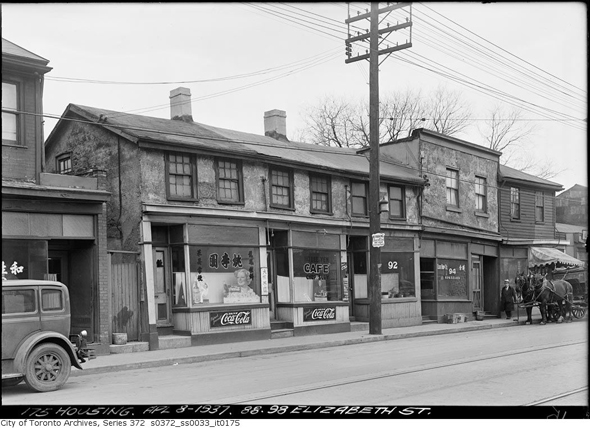
But eventually a new generation of immigrants from Hong Kong started to settle within the area of Dundas West and Spadina Avenue, outside of the boundaries of the original Chinatown. They opened up various business, including meat markets, grocery and clothing stores, bakeries, and others.
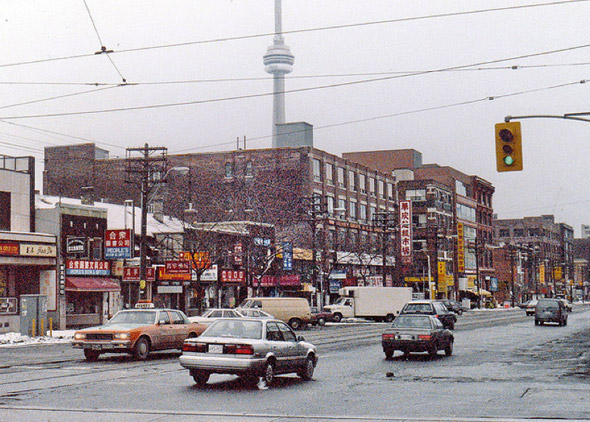
Sometime in the 1970s, the city erected street signs in both English and Chinese. In 1977, it struck down the so-called "Blue Laws," which prohibited stores from operating on Sundays, except if they were located in tourist areas. This was not to encourage tourism in Chinatown, but rather to accommodate a cultural custom of a community, where weekends are devoted to "get togethers" and other forms of socializing.
East Chinatown is located in Riverdale, at the intersection of Broadview and Gerrard Streets. It is the newest and the second largest Chinese enclave within the former city of Toronto. Many newcomers started settling there, as the population and property prices in Chinatown on Spadina started to increase.
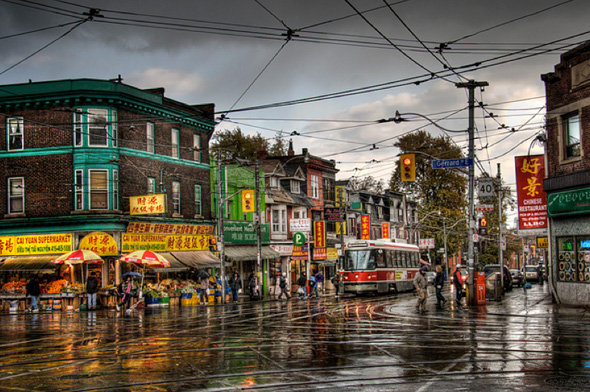
Architecturally, it is similar to its downtown counterpart, with turn-of-the-century faรงades obscured by signs and billboards. Zhong Hua Men, the Toronto Chinese Archway, at the corner of Broadview and Gerrard, was unveiled on September 12, 2009. The two lions that adorn it were a gift from the Chinese government.
Outside of the core, there are also Chinese commercial hubs - one thinks of Markham and the Pacific Mall in particular - that have taken shape in more recent years. As has been the case for the Jewish and Italian communities, there's been a steady migration northward, but given how established and bustling the downtown Chinatowns are, they're unlikely to be threatened by this trend.
Images from the Toronto Archives, CanadaGood and Jason Allies.
Latest Videos
Latest Videos
Join the conversation Load comments







